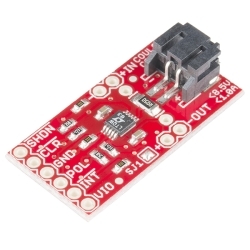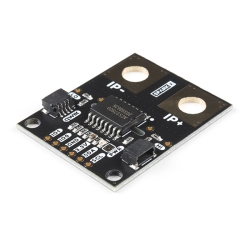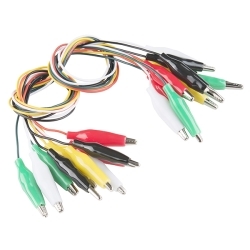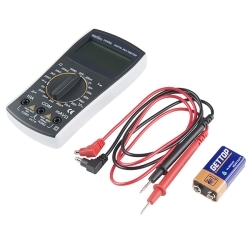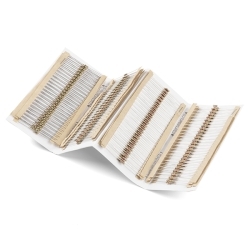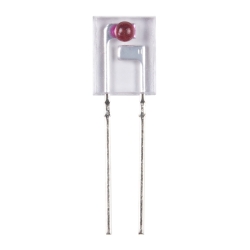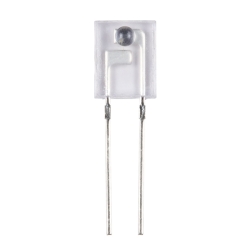SparkFun Current Sensor Breakout - ACS723
The SparkFun Current Sensor Breakout is a high accuracy board that utilizes the ACS723 for moderate AC and DC current sensing applications.
Helpful Documentation
Product Overview
This is a breakout board for the fully integrated Hall Effect based linear ACS712 current sensor. The sensor gives precise current measurement for both AC and DC signals. Thick copper conductor and signal traces allows for survival of the device up to 5 times overcurrent conditions.
The ACS712 outputs an analog voltage output signal that varies linearly with sensed current. The device requires 5VDC for VCC and a couple of filter capacitors. Please keep in mind that though the ACS712 is rated for 2.1kV isolation, the PCB it is on is not designed for that type of voltage. Please keep that in mind if you are using this breakout in high voltage applications.
Features:
- x05B (5 Amp) version
- Low noise analog signal path
- Device bandwidth is set via the FILTER pin
- 5us output rise time in response to input current
- 80kHz bandwidth
- 1.5% output error at 25 degrees C
- 1.2mOhm internal conductor resistance
- 5.0 VDC, single supply operation
- 185 mV/A output sensitivity
- Output voltage proportional to AC or DC currents
- Factory-trimmed for accuracy
- Extremely stable output offset voltage
- Nearly zero magnetic hysteresis
- Ratiometric output from supply voltage
Documents:
- [Schematic](http://cdn.sparkfun.com/datasheets/Sensors/Current/ACS712 Breakout v11.pdf)
- [Eagle Files](http://cdn.sparkfun.com/datasheets/Sensors/Current/ACS712 Breakout v11.zip)
- ACS712 Datasheet
- Wiring Example
- GitHub
Documentation
- Schematic
- Eagle Files
- Hookup Guide
- Datasheet (ACS723)
- GitHub
Customer Reviews

Stock and Customer Discounts
Available Discounts
- $12.79 | 10+ units
- $12.11 | 25+ units
- $11.44 | 100+ units

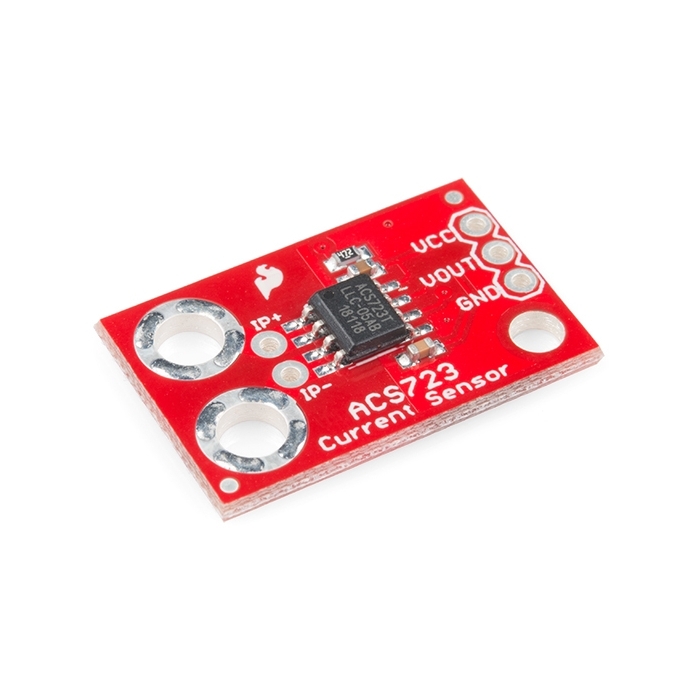
 Hookup Guide
Hookup Guide Schematic
Schematic Datasheet (ACS723)
Datasheet (ACS723)



